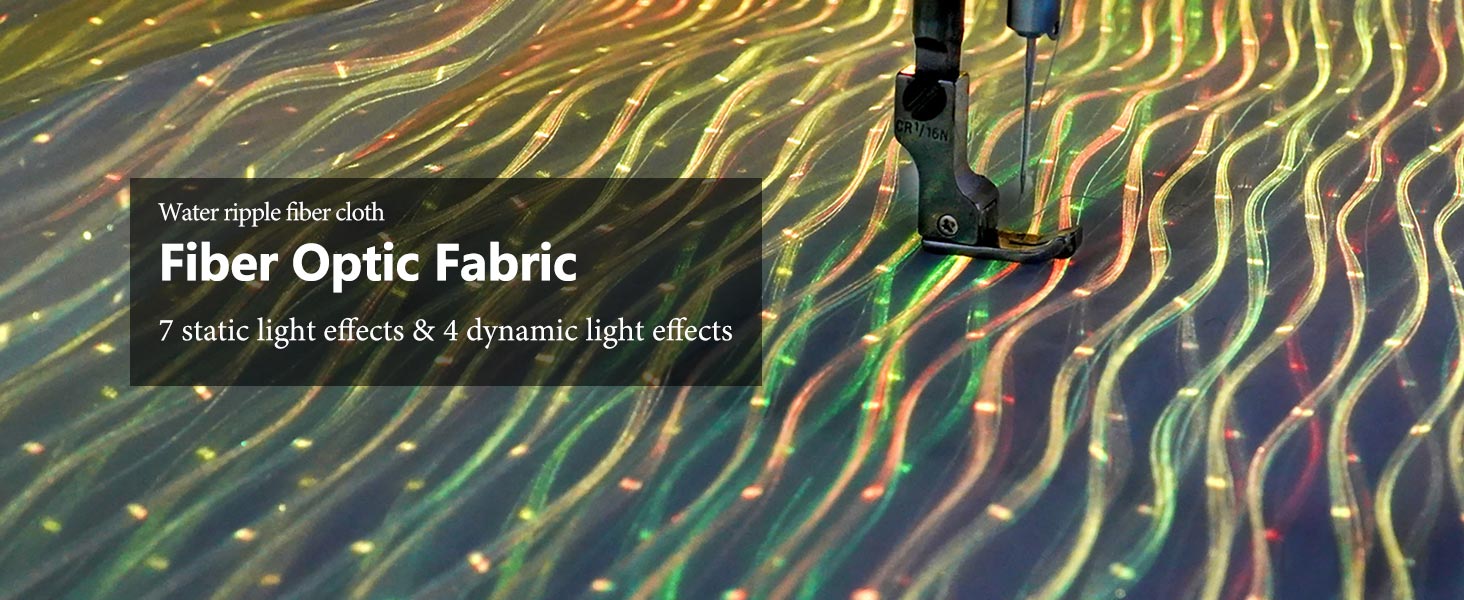The transition of fiber to fabric is a complex and fascinating process that shapes the clothing and textiles we use every day. This popular science essay explores the science behind textile production by examining the underlying theoretical and scientific bases. We will delve into four key aspects: the nature of fibers, spinning fibers into yarn, weaving yarn into fabric, and fabric dyeing and finishing. By understanding these fundamental processes, we can better appreciate the intricate world of textile manufacturing and how it has evolved over time.
1. The Nature of Fibers
Fibers are the building blocks of fabrics, and their characteristics play a crucial role in determining the properties of the final product. Fibers can be classified into two primary categories: natural and synthetic.
Natural fibers are derived from plant, animal, and mineral sources. Common examples include cotton, which is sourced from the cotton plant’s seedpods; silk, which is harvested from the cocoons of the silkworm; and wool, which is obtained from the fleece of sheep. Natural fibers are valued for their comfort, breathability, and biodegradability.
Synthetic fibers, on the other hand, are created through chemical processes. Examples include polyester, nylon, and acrylic, which are derived from petroleum-based compounds. Synthetic fibers generally possess greater durability, elasticity, and resistance to environmental factors compared to their natural counterparts. However, their production can be resource-intensive and may contribute to environmental pollution.
The structural composition of fibers influences their properties. For instance, fibers can be classified as either staple or filament fibers. Staple fibers are short, with a length of a few centimeters to several inches, while filament fibers are long, continuous strands. Staple fibers tend to produce fabrics with a softer, more textured feel, while filament fibers create smooth, lustrous fabrics.
2. Spinning Fibers into Yarn
The next step in transforming fibers into fabric is the spinning process, which involves twisting fibers together to create yarn. This process can be divided into several stages:
a. Carding: Raw fibers are first cleaned and separated to remove any impurities or entangled fibers. This is achieved using a carding machine, which consists of cylinders covered in wire teeth that comb and align the fibers.
b. Drawing: The carded fibers are drawn out and elongated, reducing their thickness and increasing their uniformity. This process is typically performed using a series of rollers that stretch the fibers, making them more suitable for spinning.
c. Spinning: The drawn fibers are then twisted together to form yarn. The degree of twist applied to the fibers impacts the yarn’s strength, elasticity, and texture. Tighter twists produce stronger, more compact yarns, while looser twists result in softer, bulkier yarns.
d. Winding: The spun yarn is wound onto spools, cones, or skeins to prepare it for the next stage of production, such as weaving or knitting.
3. Weaving Yarn into Fabric
Weaving is the process of interlacing yarns to create fabric. It is performed on a loom, a machine that holds the lengthwise yarns, known as the warp, in tension while the crosswise yarns, called the weft, are interlaced through them. There are various types of weaving techniques, such as plain, twill, and satin weave, each resulting in different fabric properties.
a. Plain Weave: In this basic weave, the weft yarn passes over and under each warp yarn alternately. Plain weave produces a simple, balanced fabric with equal amounts of warp and weft yarns visible on the surface.
b. Twill Weave: The weft yarn passes over two or more warp yarns, then
under one or more warp yarns, creating a diagonal pattern across the fabric. Twill weaves produce fabrics with a distinct texture and increased durability compared to plain weaves. produce fabrics with a distinct texture and increased durability compared to
c. Satin Weave: This weave features long floats, or unbroken stretches of yarn, on the fabric surface. The weft yarn passes over several warp yarns, then under one warp yarn, resulting in a smooth, lustrous fabric.
4. Fabric Dyeing and Finishing
The final steps in the fiber-to-fabric process involve dyeing and finishing, which enhance the appearance and performance of the finished textile.
a. Dyeing: The application of color to fabrics is a crucial aspect of textile production. There are various dyeing methods, such as piece dyeing, yarn dyeing, and solution dyeing. Each method has specific advantages and limitations, depending on factors such as fiber type, desired color intensity, and environmental considerations. solution dyeing. Each method has specific advantages and limitations, depending on factors such as
b. Finishing: The finishing process involves treating fabrics to improve their appearance, performance, and longevity. Some common finishing techniques include:
- Bleaching: This process removes any remaining impurities or color from the fabric, providing a clean, uniform base for dyeing or printing.
- Mercerization: A treatment applied to cotton fabrics, mercerization increases the fabric’s strength, luster, and dye absorption by immersing it in a caustic soda solution.
- Calendering: Fabrics are passed between heated rollers to create a smooth, polished surface.
- Sanforization: A mechanical process that pre-shrinks fabrics to minimize shrinkage during washing and drying.
The introduction of fiber-optic fabrics is another major advance in textile discovery. These fabrics incorporate optical fibers that transmit light, allowing for innovative applications such as wearable technology and interactive clothing. While still in the early stages of development, fiber-optic fabrics have the potential to revolutionize the textile industry by combining aesthetics, functionality, and technology in unprecedented ways.
Conclusion
From fiber to fabric, the textile production process is a fascinating and complex journey that involves several interconnected steps. By examining the nature of fibers, the spinning of fibers into yarn, the weaving of yarn into fabric, and the dyeing and finishing processes, we gain a deeper understanding of the science behind textile manufacturing. As the industry continues to evolve and innovate, new developments such as fiber-optic fabrics promise to reshape the way we think about textiles and their potential applications in our everyday lives.manufacturing. As the industry continues to evolve and innovate, new developments such as fiber-optic fabrics promise to reshape the waymanufacturing.
5. The Future of Textile Production: Sustainability and Innovation
As we look forward to the future of textile production, it is essential to consider the challenges and opportunities that lie ahead, particularly in the areas of sustainability and innovation.
a. Sustainable Textiles: The textile industry is a major consumer of resources, including water, energy, and raw materials, and is responsible for significant environmental pollution. As a result, there is a growing demand for more sustainable textiles and production practices. Some promising developments include:
- Organic and regenerative agriculture: The cultivation of natural fibers, such as organic cotton and flax, using environmentally friendly practices that preserve soil health, biodiversity, and water resources.
- Recycled and biodegradable synthetic fibers: The development of synthetic fibers made from recycled materials, such as recycled polyester and nylon, and biodegradable alternatives, like PLA-based polymers, to reduce resource consumption and waste.
- Closed-loop production systems: The implementation of production processes that minimize waste and pollution by recycling and reusing water, energy, and materials throughout the production cycle.
b. Innovative Textile Technologies: As textile production evolves, new technologies and materials are emerging, offering exciting possibilities for the future of textiles. Some examples include:
- Smart textiles: The integration of electronic components, such as sensors and microprocessors, into fabrics, enabling them to monitor and respond to environmental conditions, biometric data, or user input. Applications include sports and fitness wear, medical textiles, and safety gear.
- Nanotechnology: The manipulation of materials at the nanoscale to create textiles with enhanced properties, such as improved strength, water repellency, or UV protection. Examples include carbon nanotube-reinforced fibers and nanoparticles incorporated into fabric coatings.
- 3D printing: The use of 3D printing technology to create textiles and garments directly from digital designs, offering new possibilities for customization, on-demand production, and reduced waste.
Conclusion
The textile industry has come a long way since the days of spinning wheels and hand looms, but the journey from fiber to fabric remains a fascinating and complex process. As we strive to make textile production more sustainable and explore new frontiers in textile technology, we can look forward to a future where textiles continue to evolve and play a vital role in our daily lives. Through a deeper understanding of the science behind textile manufacturing and appreciation for the innovations shaping the industry, we can make more informed choices as consumers and contribute to a more sustainable and innovative future for textiles. manufacturing and appreciation for the innovations shaping the industry, we can make more informed choices as consumers and contribute to a more manufacturing and appreciation for the innovations
6. The Social and Economic Impact of Textile Production
As we explore the science and innovations shaping the textile industry, it is essential to consider the broader social and economic implications of textile production. The industry is a significant source of employment and economic growth, but it also faces numerous challenges related to labor rights, fair wages, and working conditions.
a. Employment and Economic Development: The textile industry is a major employer worldwide, providing jobs for millions of people in agriculture, manufacturing, and related sectors. The industry contributes significantly to the economies of many countries, particularly in developing regions where textile production and export play a vital role in economic growth and poverty reduction.manufacturing, and related sectors. The industry contributes significantly to the economies of many countries, particularly in developing regions where textile production and export play a vital role inmanufacturing, and related sectors. The industry contributes significantly to the economies
b. Labor Rights and Working Conditions: Despite its economic importance, the textile industry has long been associated with poor working conditions, low wages, and exploitation of workers. Child labor, forced labor, and unsafe working conditions are still prevalent in some parts of the industry. To address these issues, there is a growing movement towards more ethical and responsible textile production, with initiatives such as Fair Trade certification, the Ethical Trading Initiative, and the Better Cotton Initiative promoting better labor practices and improved working conditions.
c. The Role of Consumers and Brands: As awareness of the social and environmental impacts of textile production increases, consumers are increasingly demanding more responsible and sustainable products. This shift in consumer behavior has led to the emergence of ethical and eco-friendly fashion brands, as well as established brands adopting more sustainable practices. By supporting these initiatives and making informed choices, consumers can play a significant role in driving positive change within the textile industry.
Conclusion
The textile industry is not only a story of scientific innovation and technological advancement but also one of social and economic transformation. As we deepen our understanding of the processes involved in textile production and appreciate the innovations that shape the industry, we must also consider the broader implications of textile manufacturing on society and the environment. By addressing the challenges related to sustainability, labor rights, and working conditions, we can work towards a future where the textile industry is not only a source of beautiful, functional fabrics but also a force for positive social and economic change. manufacturing on society and the environment. By addressing the challenges related to sustainability, labor rights, and working conditions, we can work towards a future where the textile industry is not only a source of beautiful, functional manufacturing on society and the environment. By addressing the challenges related to sustainability, labor rights, and working conditions, manufacturing on society and the environment.
7. The Cultural Significance of Textiles
Textiles not only have functional and economic roles but also hold great cultural significance, reflecting the rich tapestry of human history and creativity. The artistry, techniques, and materials used in textile production often carry deep cultural meanings and serve as a medium for cultural expression.
a. Traditional Textile Techniques: Throughout history, various cultures have developed unique textile techniques that reflect their artistic traditions, environmental conditions, and available resources. Examples include the intricate ikat weaving of Indonesia, the resist-dyeing techniques of Japanese shibori, and the colorful embroidery of Mexican Otomi textiles. These traditional techniques are often passed down through generations, preserving cultural heritage and fostering a sense of identity and continuity.
b. Symbolism and Storytelling: Textiles often carry symbolic meanings, with patterns, colors, and motifs representing cultural values, beliefs, and narratives. For instance, the Adinkra symbols of West Africa convey complex philosophical concepts, while the geometric patterns of Native American textiles reflect cosmological beliefs and natural phenomena. Through their designs, textiles can tell stories, express emotions, and connect people across time and space.
c. The Role of Textiles in Ritual and Ceremony: Textiles play a vital role in many cultural rituals and ceremonies, serving as clothing, decoration, or symbolic objects. Examples include the sacred vestments worn by religious leaders, the ceremonial textiles used in weddings or funerals, and the flags and banners that represent nations and communities. These ritual textiles often incorporate specialized materials, techniques, and designs that reflect their cultural and spiritual significance.
Conclusion
As we explore the science and processes involved in textile production, it is essential to recognize the multifaceted nature of textiles and their role in shaping human culture and experience. From traditional techniques to symbolic motifs and ritual use, textiles are a powerful medium for cultural expression and connection. By appreciating the cultural significance of textiles, we not only enrich our understanding of the fiber-to-fabric journey but also celebrate the creativity, diversity, and shared heritage of humanity.
8. Textiles in the Age of Digital Transformation
In the era of digital transformation, the textile industry is undergoing significant changes, with new technologies and digital tools reshaping the way textiles are designed, produced, and distributed. This digital revolution presents both opportunities and challenges for the future of textile production.
a. Digital Design and Simulation: Advanced software tools and digital design techniques are revolutionizing the way textiles are created. Designers can now experiment with complex patterns, colors, and materials in a virtual environment, streamlining the design process and reducing the need for physical prototypes. Digital simulation tools also allow for more accurate prediction of a textile’s performance and appearance, enabling more informed decision-making and reducing waste.
b. Digital Printing and Production: The advent of digital printing technology has opened up new possibilities for textile production, allowing for greater customization, flexibility, and speed. Digital textile printers can create intricate designs with high-resolution detail, vibrant colors, and minimal waste. Additionally, digital cutting and sewing technologies enable precise and efficient production of garments, reducing material waste and labor costs.
c. E-commerce and the Digital Supply Chain: The rise of e-commerce has transformed the way textiles are marketed, sold, and distributed. Online platforms enable brands and designers to reach a global audience, while digital supply chain management tools provide greater visibility and control over production processes. This digitalization of the supply chain can lead to more efficient and sustainable practices, such as just-in-time production and on-demand manufacturing, reducing waste and inventory costs.manufacturing, reducing
Conclusion
The digital revolution is reshaping the textile industry, offering new possibilities for design, production, and distribution. As we continue to explore the fascinating journey from fiber to fabric, it is essential to recognize the impact of digital transformation on the future of textiles. By embracing digital technologies and adapting to the changing landscape, the textile industry can continue to innovate, evolve, and meet the challenges of the 21st century. This technological progress, combined with a deeper understanding of the science, cultural significance, and social implications of textiles, can contribute to a more sustainable, creative, and connected future for the world of textile production.





 No products in the cart.
No products in the cart.